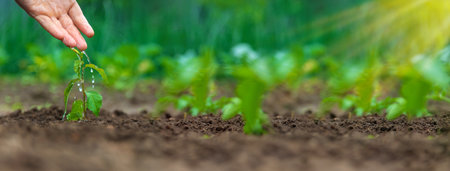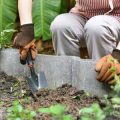1. Why Early Spring is the Perfect Time to Start Your Garden
Early spring is one of the best times to kick off your vegetable garden, especially if youre eager to grow your own fresh produce right in your backyard. As the days start to warm up and the ground begins to thaw, many cold-tolerant vegetables thrive in these conditions. Starting your garden in early spring not only gives you a head start on the growing season but also comes with several unique benefits.
Longer Growing Season
Planting in early spring means your vegetables have more time to mature. This is especially helpful for crops that take longer to grow, like carrots or cabbage. A longer season also allows gardeners in cooler climates to fit in multiple plantings or even try out succession planting techniques.
Optimal Soil Temperatures
Once the soil warms up just enough—usually around 40°F to 50°F depending on the crop—many cool-season vegetables can be planted directly into the ground. These temperatures are ideal for seed germination and root development for veggies like spinach, peas, and radishes.
Fewer Pests and Diseases
Pests and plant diseases tend to become more active as the weather gets warmer. By planting early, you reduce the risk of infestations from common garden pests like aphids, cabbage worms, and beetles. Cool temperatures naturally deter many insects, giving your young plants a better chance to grow strong and healthy.
Best Vegetables for Early Spring Planting
Here’s a quick overview of some top vegetables that thrive when planted in early spring:
| Vegetable | Ideal Soil Temp (°F) | Days to Harvest | Cold Tolerance |
|---|---|---|---|
| Spinach | 40–45 | 35–45 | Excellent |
| Peas | 45–50 | 60–70 | Good |
| Lettuce | 40–60 | 30–60 | Good |
| Radishes | 45–50 | 20–30 | Excellent |
| Kale | 45–50 | 50–65 | Excellent |
The Takeaway for Gardeners
If youre new to gardening or just looking for ways to maximize your harvest this year, starting in early spring is a smart move. With favorable soil conditions, fewer pests, and an extended growing window, youll set yourself—and your garden—up for success.
2. Top 10 Vegetables that Thrive in Early Spring
Early spring is a great time to start planting cool-season vegetables in most parts of the U.S. These crops can handle chilly nights and even a light frost, making them ideal for gardeners eager to get started before summer heat kicks in. Below is a curated list of 10 vegetables that grow well when planted early in the season, along with their preferred growing conditions and climate compatibility.
Top 10 Cool-Season Vegetables
| Vegetable | Ideal Soil Temp | Days to Maturity | Growing Tips |
|---|---|---|---|
| Lettuce | 40–75°F | 30–60 days | Sow directly or start indoors; keep soil moist for best flavor. |
| Spinach | 35–75°F | 35–50 days | Loves cool temps; bolts quickly in heat, so plant early. |
| Kale | 45–75°F | 50–70 days | Tolerates frost well; flavor improves after cold snaps. |
| Bok Choy (Pak Choi) | 50–70°F | 30–45 days | Sow directly or transplant; prefers consistent watering. |
| Cabbage | 45–75°F | 65–100 days | Tolerates cold well; space out seedlings to prevent crowding. |
| Cilantro (Coriander) | 50–85°F | 45–70 days | Bolt-resistant varieties are best for spring; loves cooler temps. |
| Bush Peas (Snap or Snow) | 40–75°F | 55–70 days | Sow directly in soil; trellis support helps climbing varieties. |
| Cauliflower | 55–75°F | 60–85 days | Sensitive to temp swings; mulch helps regulate soil warmth. |
| Bunching Onions (Green Onions) | 50–80°F | 60–80 days | Sow thickly and thin later; prefers loose, rich soil. |
| Crisp Radishes | 45–70°F | 20–30 days | Matures fast; great option for quick harvests early in the season. |
A Few Growing Tips for Early Spring Success:
#1: Prepare Your Soil Early:
If the ground isn’t frozen, work compost or aged manure into your garden beds as soon as possible. Cold-hardy veggies appreciate nutrient-rich soil from the start.
#2: Use Row Covers When Needed:
A floating row cover can help protect young seedlings from unexpected frosts or chilly winds while still allowing sunlight and moisture through.
#3: Know Your Zone:
The USDA Plant Hardiness Zone Map helps determine your local last frost date. Most of these vegetables can be sown 2–4 weeks before that date, depending on your zone.
*Tip:
You can find your average last frost date by checking local extension services or weather apps tailored for gardening like Almanac.com’s Frost Dates calculator.
This mix of leafy greens, root vegetables, and legumes offers variety and nutrition, and they’re all suited for different regions across the U.S. Whether you live in the Pacific Northwest, Midwest, or Southeast, these cool-weather champs are a smart way to kick off your garden season!
3. Essential Tips for Preparing Your Spring Garden
Getting your garden ready in early spring is the key to a successful growing season, especially when youre planting cool-season vegetables like lettuce, spinach, peas, and radishes. Here’s how to make sure your garden beds are prepped and your young plants are protected from unpredictable spring weather.
Test and Enrich Your Soil
Before planting anything, it’s important to know what kind of soil you’re working with. A simple soil test kit from your local garden center or extension office can help you measure pH levels and nutrient content. Most vegetables prefer slightly acidic to neutral soil (pH 6.0–7.0).
Once tested, amend your soil based on the results. You can use compost, aged manure, or organic fertilizers to add nutrients and improve texture.
Common Soil Amendments
| Amendment | Purpose | Best For |
|---|---|---|
| Compost | Adds organic matter and nutrients | All vegetables |
| Lime | Raises pH (reduces acidity) | Cabbage, broccoli |
| Sulfur | Lowers pH (increases acidity) | Potatoes, radishes |
| Bone Meal | Adds phosphorus for root growth | Carrots, beets |
| Blood Meal | Adds nitrogen for leafy greens | Lettuce, spinach |
Prepare Your Garden Beds
Once the soil is workable—not too wet or frozen—start by clearing out any weeds or leftover debris from last season. Loosen the soil with a garden fork or tiller to help roots grow easily. Raised beds tend to warm up faster in spring, making them ideal for early planting.
Protect Young Seedlings from Cold Snaps
Spring weather can be unpredictable. Even cold-hardy vegetables need some protection when theyre just sprouting. Use season-extending tools like:
Cold Frames
A cold frame is like a mini greenhouse made from old windows or clear plastic over a wooden box. It traps heat during the day and keeps seedlings warm overnight.
Row Covers
Floating row covers made of lightweight fabric shield plants from frost while allowing sunlight and rain through. They also protect against pests.
Cloches
You can use glass or plastic cloches to cover individual plants. Theyre perfect for smaller gardens or specific crops like lettuce or herbs.
Create a Planting Plan
To get the most out of your garden space, sketch out where each vegetable will go based on its spacing needs and sunlight requirements. Group crops with similar care needs together—for example, leafy greens that enjoy cooler temps and consistent moisture.
With these steps in place, your spring garden will be off to a strong start—and ready for those top 10 early spring veggies!
4. How to Grow and Care for Your Spring Vegetables
Planting early spring vegetables takes a bit of planning and care, but with the right approach, youll be rewarded with a bountiful harvest. Heres how to get the most out of your top 10 spring crops.
Soil Preparation
Before planting, make sure your garden soil is well-draining and rich in organic matter. Mix in compost or aged manure a few weeks before planting to boost soil fertility. If the ground is still too cold or wet, consider using raised beds or cold frames to warm up the soil faster.
Planting and Spacing Guidelines
Each vegetable has its own spacing needs to ensure proper growth and airflow. Use this table as a quick reference:
| Vegetable | Planting Depth | Spacing Between Plants | Spacing Between Rows |
|---|---|---|---|
| Lettuce | 1/4 inch | 6–8 inches | 12–18 inches |
| Spinach | 1/2 inch | 3–5 inches | 12 inches |
| Kale | 1/2 inch | 12–18 inches | 18–24 inches |
| Radishes | 1/2 inch | 1 inch | 6–8 inches |
| Peas | 1 inch | 2 inches apart in double rows | 18–24 inches between double rows |
| Carrots | 1/4 inch | 2–3 inches after thinning | 12–18 inches |
| Bok Choy | 1/2 inch | 6–12 inches depending on variety | 18 inches |
| Cabbage | 1/2 inch (transplants) | 12–24 inches | 24–36 inches |
| Beets | 1/2 inch | 3–4 inches after thinning | 12–18 inches |
| Arugula | 1/4 inch | 4–6 inches after thinning | 12 inches |
Watering Tips for Early Spring Crops
- Avoid overwatering: Spring soils can retain moisture longer due to cooler temperatures. Water only when the top inch of soil feels dry.
- Irrigate in the morning: This helps prevent fungal issues by allowing leaves to dry during the day.
- Aim for consistency: Uneven watering can cause problems like split radishes or bitter lettuce.
- Mulch where possible: A thin layer of straw or shredded leaves helps maintain moisture and reduce weeds.
Pest and Disease Management
Pests start becoming active as temperatures rise. Keep an eye out for common culprits like aphids, flea beetles, and cabbage worms. Use row covers early in the season to protect tender seedlings. Also, practice crop rotation each year to avoid recurring diseases in the soil.
Harvesting Tips for Maximum Flavor and Yield:
- Lettuce & Spinach: Harvest outer leaves when theyre young and tender, or cut whole heads before they bolt (flower).
- Kale & Bok Choy: Pick lower leaves first, allowing new growth from the center.
- Podded Veggies (Peas): Harvest regularly to encourage more production. Pods should be full but not tough.
- Tubers & Roots (Radishes, Carrots, Beets): Pull them when theyre about thumb-sized for best flavor and texture.
- Cabbage: Cut heads when firm and full-sized, before they split from overgrowth or rain.
A Few Bonus Tips:
- Sow successively: Plant small batches every couple of weeks so you don’t get overwhelmed with all your veggies at once.
- Keeps notes: Track what varieties perform best in your garden so you can plan even better next year.
Caring for your spring vegetables doesn’t have to be complicated. With good timing, healthy soil, and a little attention each week, you’ll enjoy fresh, homegrown produce before summer even begins!
5. Common Challenges and How to Overcome Them
Starting your vegetable garden in early spring can be super rewarding, but its not without its challenges. From surprise frosts to stubborn seeds that won’t sprout, early spring gardeners often face a few bumps in the road. Don’t worry—we’ve got you covered with simple solutions to keep your garden growing strong.
Unpredictable Frosts
Even as the days start getting warmer, cold snaps can still sneak in during early spring. These sudden frosts can damage or kill young seedlings if youre not careful.
How to Protect Your Plants:
- Use Row Covers: Lightweight fabric row covers can shield plants from frost while still letting in light and air.
- Plant Cold-Hardy Crops: Stick with vegetables like kale, spinach, and peas that can handle chilly temps.
- Watch the Weather: Keep an eye on local forecasts so you’re ready to cover your plants when needed.
Pests
Bugs don’t wait for summer—they show up as soon as temperatures rise. Aphids, cutworms, and flea beetles are common early-spring pests that can nibble away at your veggies.
Simple Pest Solutions:
| Pest | Signs of Damage | What You Can Do |
|---|---|---|
| Aphids | Curling leaves, sticky residue | Spray with soapy water or release ladybugs |
| Cutworms | Seedlings cut at the base | Use collars around stems or sprinkle diatomaceous earth |
| Flea Beetles | Tiny holes in leaves | Cover crops with floating row covers and use neem oil spray |
Poor Germination
If your seeds aren’t sprouting like they should, it could be due to cold soil, old seeds, or too much moisture.
Troubleshooting Tips:
- Warm Up the Soil: Use black plastic or cloches to help warm the ground before planting.
- Check Seed Quality: Always use fresh seeds from a trusted source—old seeds may not germinate well.
- Avoid Overwatering: Keep the soil moist but not soggy; too much water can rot seeds before they sprout.
The Bottom Line
A little preparation goes a long way in early spring gardening. By staying alert for frost, managing pests early, and setting your seeds up for success, youll be enjoying fresh homegrown veggies before you know it!


